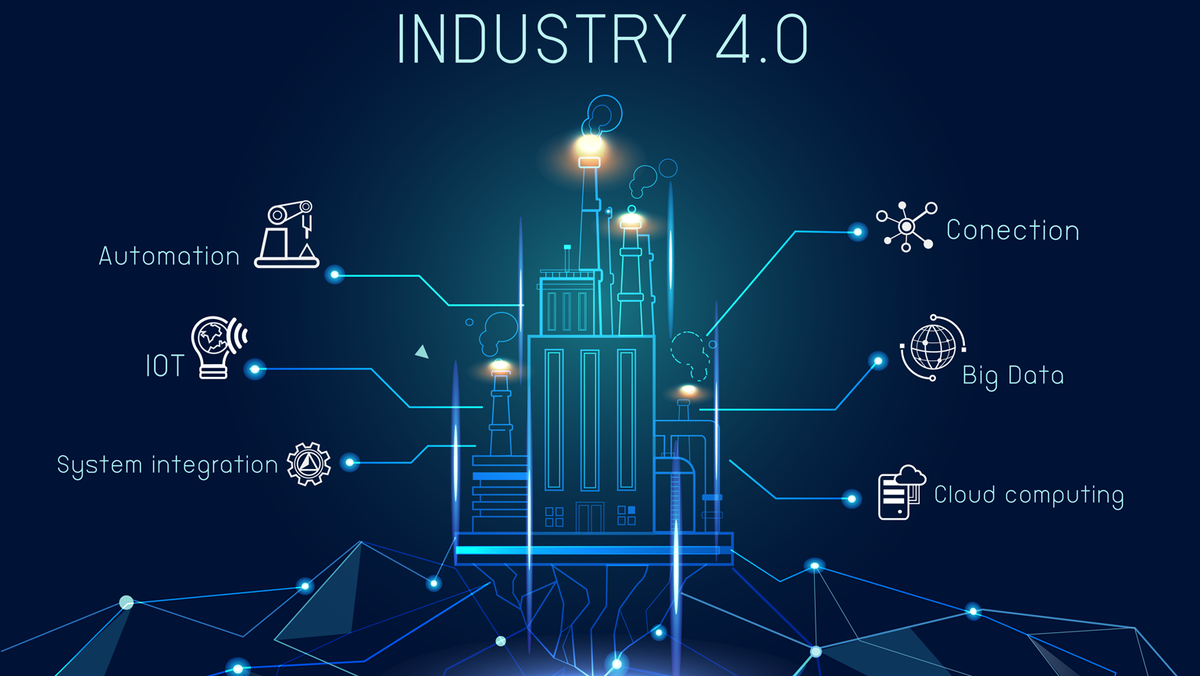Step into the future with the arrival of The Fourth Industrial Revolution, or Industry 4.0. Large-scale machine-to-machine communication and the Internet of Things (IoT) are being integrated for increased automation, improved communication, and self-monitoring. Is your facility ready for the automation of traditional manufacturing and industrial practices, using modern smart technology?
Welcome to Industry 4.0
The fourth industrial revolution, which came into existence in the past few years, is established as Industry 4.0. More flexible production, greater productivity, and the development of new business models are all possible today thanks to digital solutions. But the future of industry offers even more potential… Cutting-edge technologies will create new opportunities for both discrete and process industries to fulfil their customers’ specific and individual requirements.
Let’s take a closer look at what characterises Industry 4.0…
Design principles
There are four design principles that are associated with Industry 4.0:
1. Technical assistance
The technological facility of systems to assist humans in decision-making and problem-solving, and the ability to help humans with difficult or unsafe tasks.
2. Decentralized decisions
Tis refers to the ability of cyber physical systems to make decisions on their own and to perform their tasks autonomously. Only in the case of exceptions, interference, or conflicting goals, are tasks delegated to a higher level.
3. Interconnection
The ability of machines, devices, sensors, and people to connect and communicate with each other via the Internet of Things (IoT), or the internet of people (IoP).
4. Information transparency
Decision-making is facilitated by the information transparency afforded by Industry 4.0 technology. Furthermore, inter-connectivity provides operators with huge amounts of data and information from all points in the manufacturing process.
What is The Digital Twin?
Developing a new product, planning a new plant, or producing with the help of digital tools creates a detailed virtual image, the digital twin.
The digital twin is the precise virtual model of a product or a production plant. The digital twin creates new insights, thanks to the combination of physics-based simulations with data analytics in a fully virtual environment. This makes it possible to realize innovations faster, while also requiring significantly fewer real prototypes. Even more data is created when the product is being produced or a plant begins operation. The performance data of the production and real product is being collected, analyzed and fed back into development.
Vertical Integration in Industry 4.0
Vertical integration adds data analytic capabilities to the shop floor. In other words: operation technology (OT) is now combined with information technology (IT) capabilities. As a result, this provides entirely new findings and optimization potential, ranging from predictive maintenance and condition monitoring to improved validation and quality management processes and entirely new business models, such as pay per use.
The approach also enables the use of artificial intelligence with industrial applications. Vertical integration and its ability to combine OT and IT is thus driving implementation of the Industrial Internet of Things. A prerequisite for vertical integration is ensuring seamless data throughput across all interfaces, from different field devices and systems to higher-level control systems and platforms, and even the cloud.
Is your facility Industry 4.0-ready?
Digitalization is transforming industry. Greater flexibility, virtual validation, industrial controllers, and edge computing are some of the hot topics and trends that will likely dominate Industry 4.0 going forward.
Click HERE to learn more about the future of industry and the Digital Enterprise.
CHAT to us about aligning your facility to Industry 4.0!


